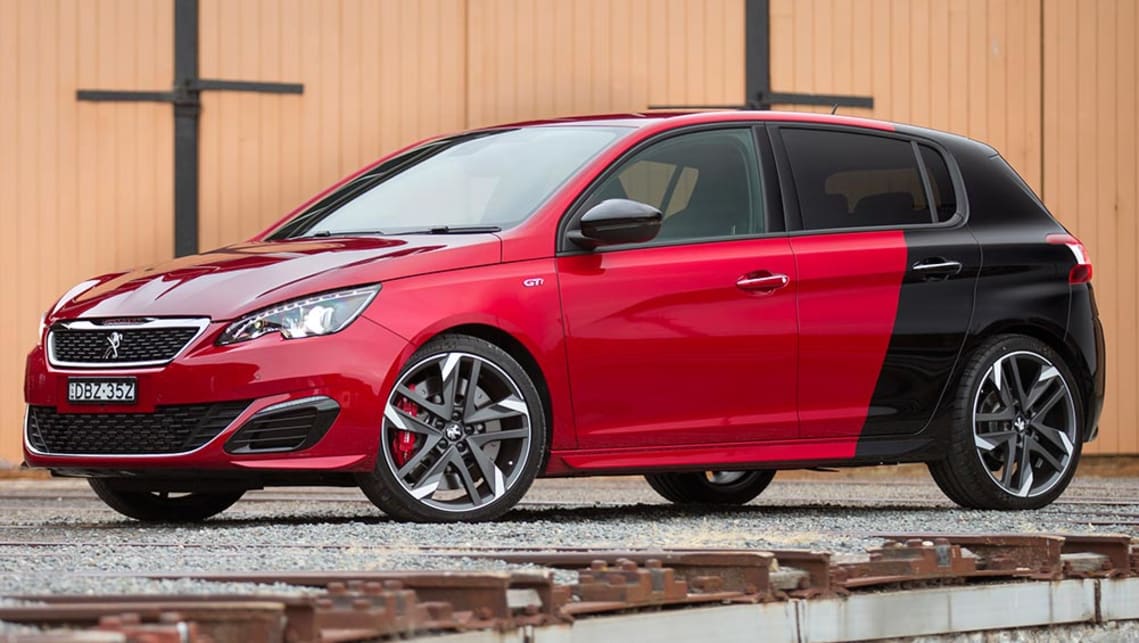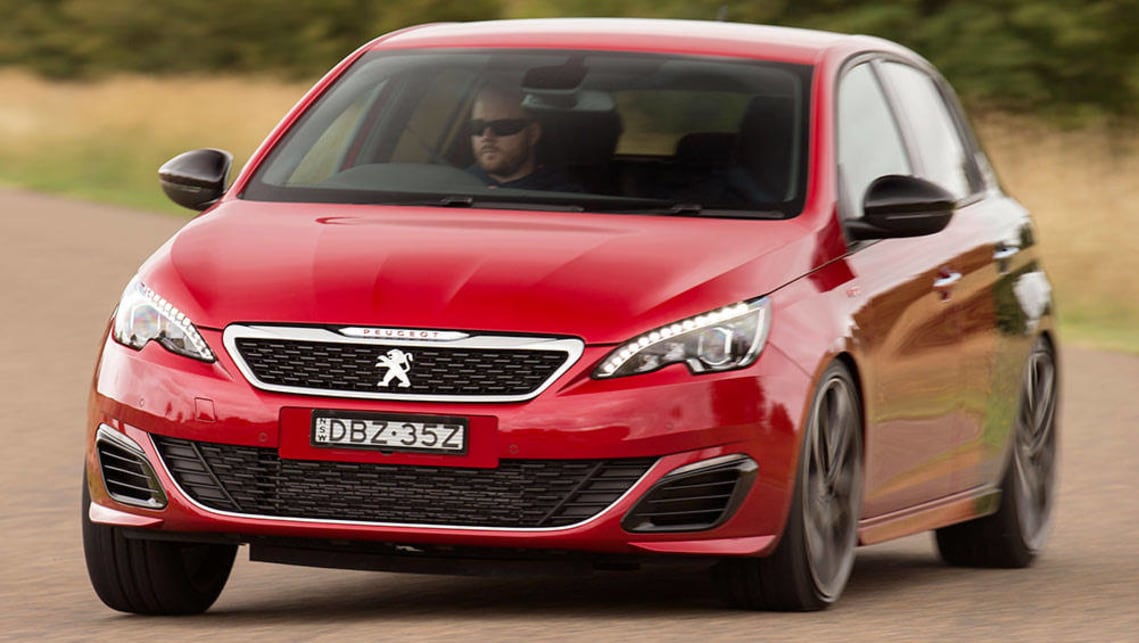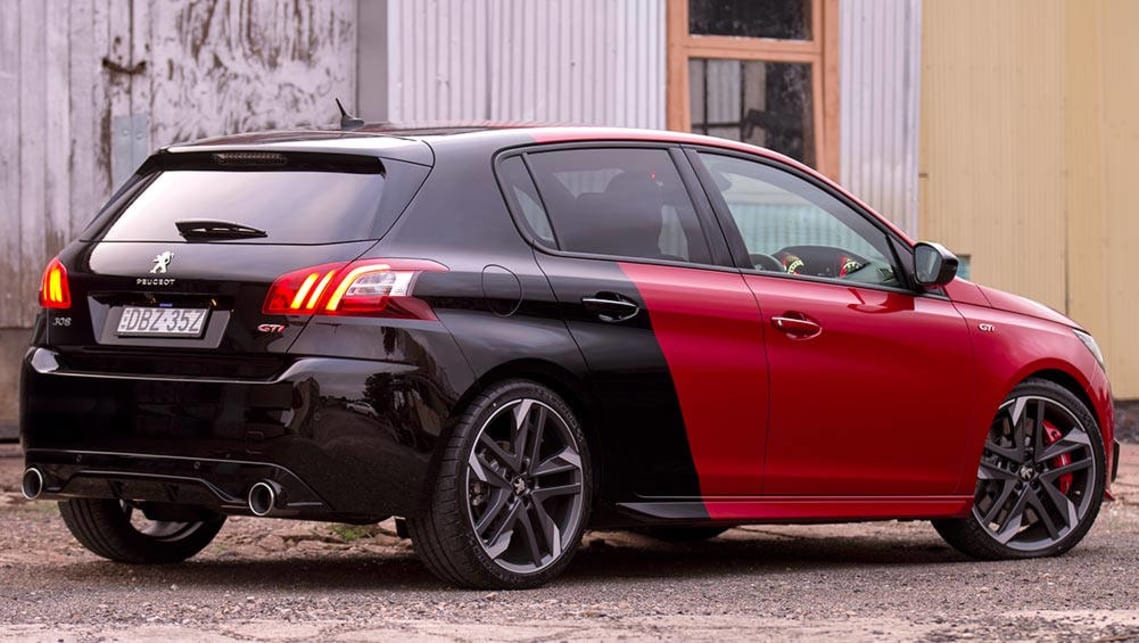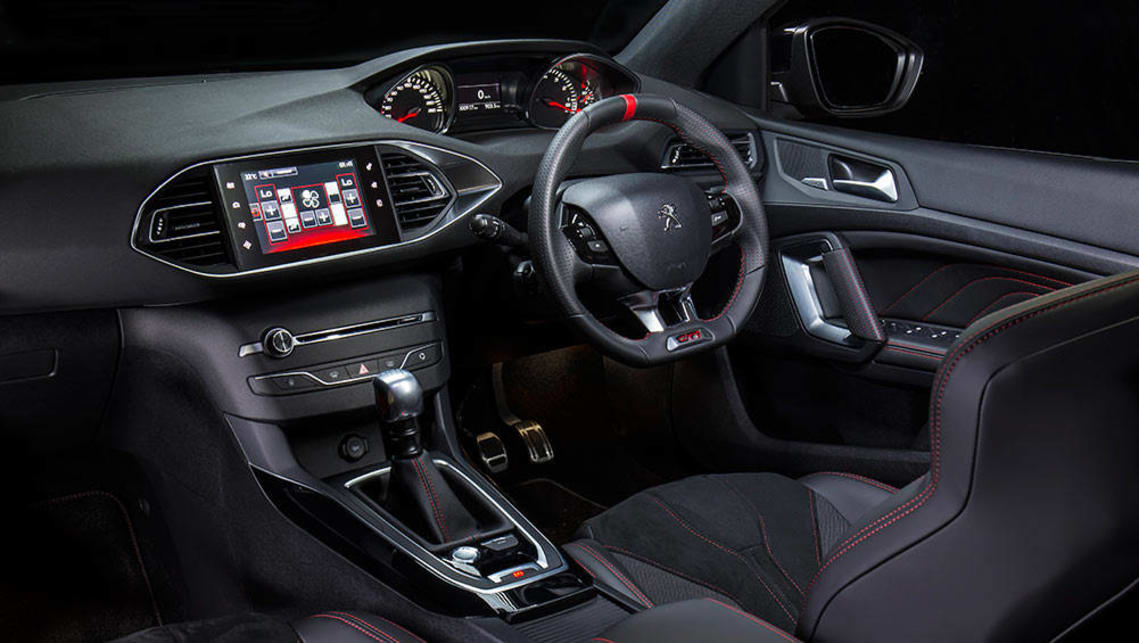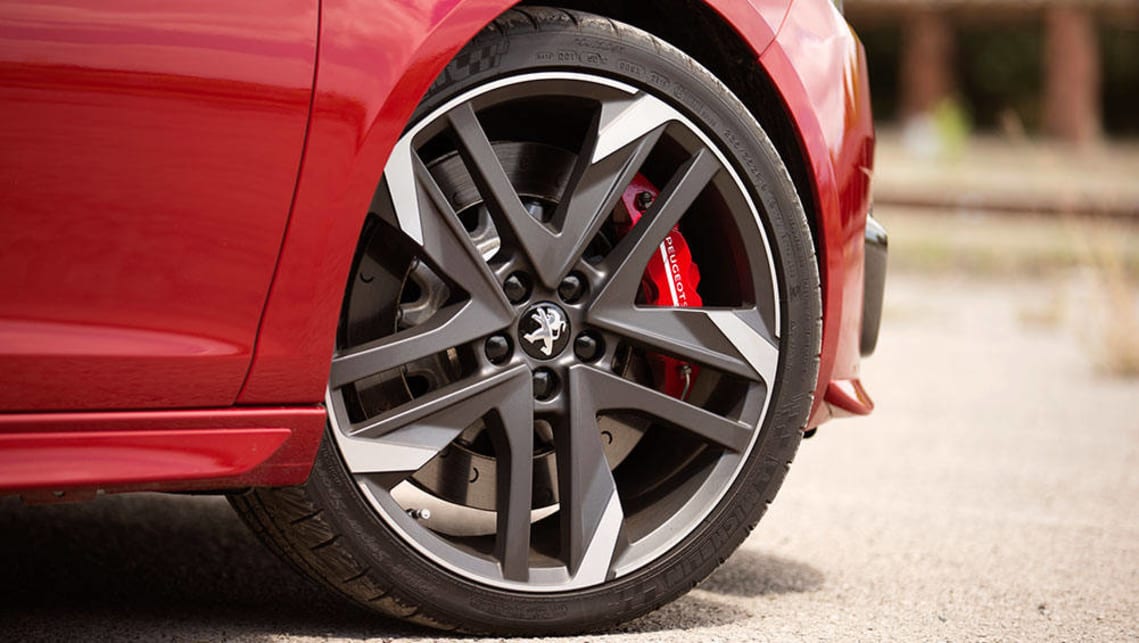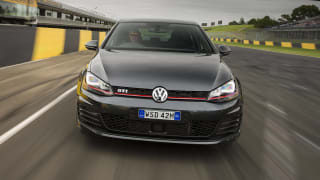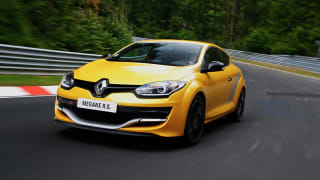Peugeot is returning to the hot hatch market with not one but two 308 GTi models.
One of the original hot hatches is back. French car maker Peugeot has returned to the world's biggest performance-car class with the 308 GTi.
The company has had "warm" hatches of various shapes and sizes for the past decade or so, but by its own admission this is its first authentic hot hatch in 15 years.
It joins a vastly different market than the one it helped pioneer with the Peugeot 205 GTi in the 1980s.
Today, the category is dominated by vehicles such as the Volkswagen Golf GTI ($40,990), Ford Focus ST ($38,990), Renault Megane RS ($43,990) and Subaru WRX ($38,990), the latter not a hatch, but attracts the same buyers.
Which is why the $44,990 starting price of the Peugeot 308 GTi 250 raised eyebrows before we even began the test drive.
The uprated 308 GTi 270 (with more power, bigger wheels and brakes, a mechanical limited slip differential, and sports seats) is $49,990 plus on-roads, which quickly climbs to $50,985 once $995 for metallic paint is added.
Cheekily, there is only one non-metallic colour. And it's undercoat grey.
Fully optioned with a panorama sunroof ($1200), "ultimate" red paintwork ($1700) and two-tone treatment where the rear of the car is black ($3000), the price climbs to a staggering $55,890 plus on-roads.
The Australian distributor says ‘our' 308 GTi is the cheapest right-hand-drive model anywhere in the Peugeot world.
This boldly puts the Peugeot in another price and performance league among the flagship all-wheel-drive hot hatches such as the Volkswagen Golf R ($52,740) and the upcoming Ford Focus RS ($50,990).
The Australian distributor says ‘our' 308 GTi is the cheapest right-hand-drive model anywhere in the Peugeot world.
The problem is, it's a similar story with Peugeot's rivals; the Ford Focus ST is $8000 cheaper in Australia than it is in the UK, at today's exchange rates. The VW Golf GTI, Subaru WRX and Renault Megane RS are also cheaper here than in the UK.
Nevertheless, Peugeot says it has a healthy list of forward orders, even before the car had arrived in showrooms and before anyone could test drive it.
So what's the fuss all about? The engine might be relatively small (it's a 1.6-litre turbo among a field of 2.0-litre turbo power) but the French have done wonders with it.
We'll spare you the full technical presentation but the internals have been strengthened and the turbocharger boosted (a high 2.5 bar for the tech heads) to create an impressive amount of power.
For the car geeks the numbers are 184kW of power for the 308 GTi 250 model and 200kW for the 270 model (the name referring to the output in old fashioned horsepower).
This puts the Peugeot in good company with the Focus ST (186kW), Golf GTI (169kW), Megane RS (201kW) and WRX (197kW).
Torque is the same in both Peugeot 308 GTi models, an impressive 330Nm from such a small engine but not quite as much grunt as its peers: Focus ST (360Nm), Golf GTI (350Nm), Megane RS (360Nm) and WRX (350Nm).
The ace up the Peugeot's sleeve, however, is its light body weight. At just 1205kg it undercuts its rivals by at least 100kg.
This explains why the claimed 0 to 100km/h times of 6.2 seconds for the 308 GTi 250 and 6.0 seconds for the top-line 270 version are at the pointy end of the class. Most rivals listed here fall in the 6.0 to 6.5-second bracket.
There was no delay in power delivery at low engine revs, customarily a trait of turbochargers.
To the uninitiated, these numbers may seem incidental. But hot hatch buyers sweat over such details.
We didn't have our timing equipment on hand to test the performance claims during the media preview drive, but we can report that the 308 GTi is an impressively quick machine.
The engine is so responsive and so powerful that we had to double check if it really was only a 1.6-litre turbo, not the industry-standard 2.0-litre.
It instantly eliminated the doubts I had about the next generation Renault Megane RS, which will also eventually downsize to a 1.6. Fingers crossed it's as good as this one.
There was no delay in power delivery at low engine revs, customarily a trait of turbochargers. And it revved smoothly and eagerly all the way to the redline.
The problem is that is revved rather silently. The Peugeot 308 GTi doesn't sound like a hot hatch.
In normal mode it's almost mute. In "sport" mode, there is a synthesized engine note pumped into the cabin. Unfortunately, it has the same lack of authenticity as the sound emitted by a Fisher Price toy fire truck.
The "sport" mode doesn't increase power but it does increase throttle response. But you can't separate it from the annoying sound. If I had a magic wand there would be a third mode which gives you the faster throttle without the Fisher Price acoustics.
The grip from the 19-inch Michelin tyres (standard on the 308 GTi 270 and a $1600 option on the 308 GTi 250) is astounding.
Armed with a mechanical limited slip differential, the 308 GTi 270 climbs out of corners with incredible grip and accuracy. The 308 GTi 250 (without a mechanical LSD) can struggle for traction out of tight bends.
Four piston calipers clamping 380mm discs could go down in history as the biggest brakes on the smallest car.
In both models, there is the occasional tug at the wheel as the front tyres try to find traction.
My favourite part of the 308 GTi 270 are the massive front brakes. Four piston calipers clamping 380mm discs (supplied by Alcon, the same company who supplies Australia's V8 Supercars) could go down in history as the biggest brakes on the smallest car.
To put the front brakes into context, the supercharged Holden Special Vehicles GTS which weighs in excess of 1800kg has 390mm front discs, and the 3.5-tonne Ram 2500 pick-up I also drove this week has 360mm front discs.
Translated: the brakes on the Peugeot 308 GTi 270 will likely never fade. They may possibly never wear (only joking, don't take that last statement to the warranty counter please). The standard brakes on the 250 model are on par with other hot hatches.
So, what's not to like? The steering is super sharp and accurate but the wheel obscures the view of the digital speed display. The rev counter is anti-clockwise for some inexplicable reason. And, as mentioned earlier, it doesn't sound like a hot hatch.
The road roar from the tyres is high, even by performance car standards. And the ride over bumps was firm but not bone jarring on the roads we sampled.
Will buyers care? Not a jot. These minor trade-offs are the reason the 308 GTi is so exhilarating to drive.
The only dilemma is choosing which one to buy. I couldn't detect any performance difference whatsoever between the 250 and 270 models, but the upgrade to the 270's larger brakes, mechanical limited slip differential and sportier seats would be worth the $5000 leap if you're a diehard Peugeot fan.
However, if you're a money enthusiast and want one of the world's best hot hatches, the Ford Focus ST has more character and is still the best bang for your bucks.
Perhaps that's why Peugeot deliberately left it off the list of likely rivals when it presented its comparison chart.



